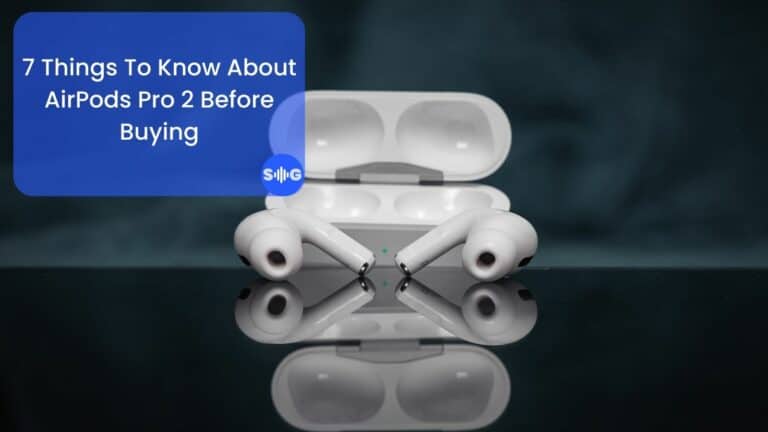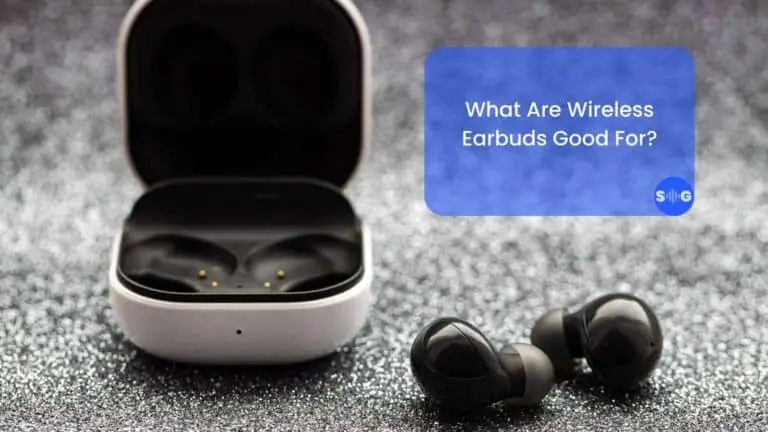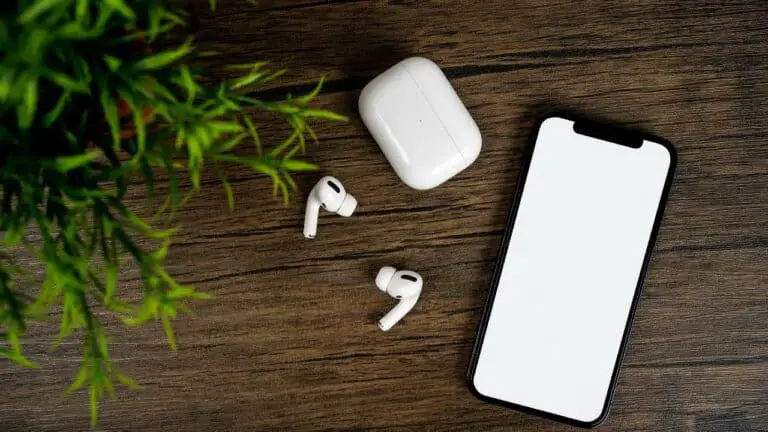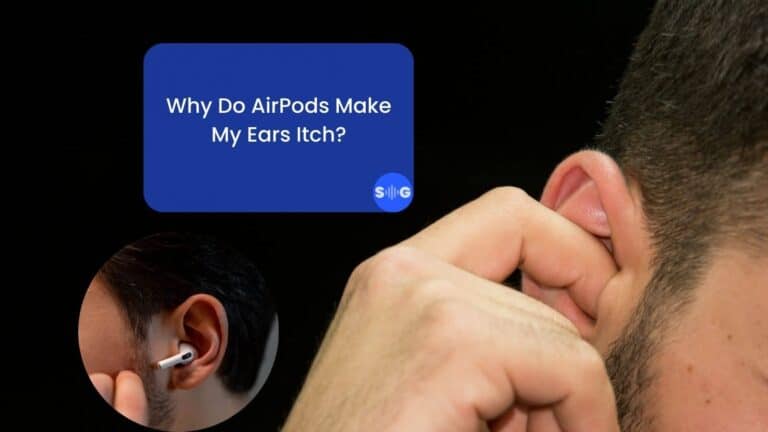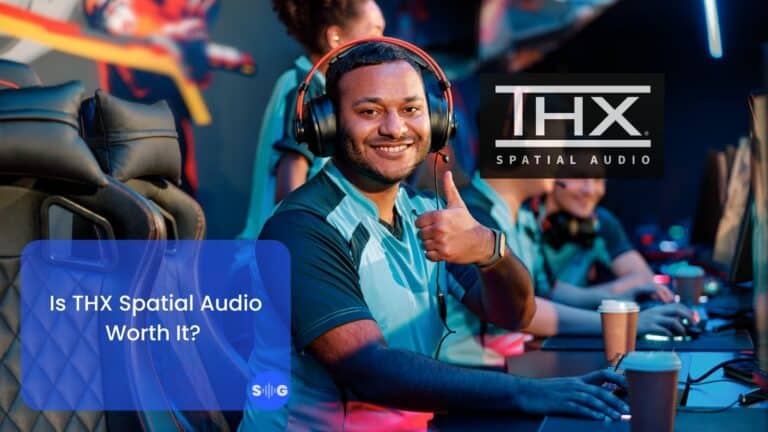Why Can I Still Hear With Noise-Cancelling Headphones? (Explained)
This post may contain affiliate links, and we will be compensated if you buy after clicking on our links. Learn More
We buy noise-cancelling headphones for two reasons: to hear our music more clearly, and to drown out the distractions from our commute or neighbours. But we often find that they’re not as efficient as we’d hoped, and some sounds still get through. So, why can you still hear with noise-cancelling headphones?
Noise-cancelling headphones cannot remove all ambient sound due to the way they work. The headphones detect outside noise with tiny microphones, then generate counter-sound to cancel out those sound waves. Sound with too many pitch variations will still get through the headphones.
Noise cancellation is more complicated than that, though. To understand why you can still hear with your headphones, let’s look at the science behind sound and noise cancellation in more detail.
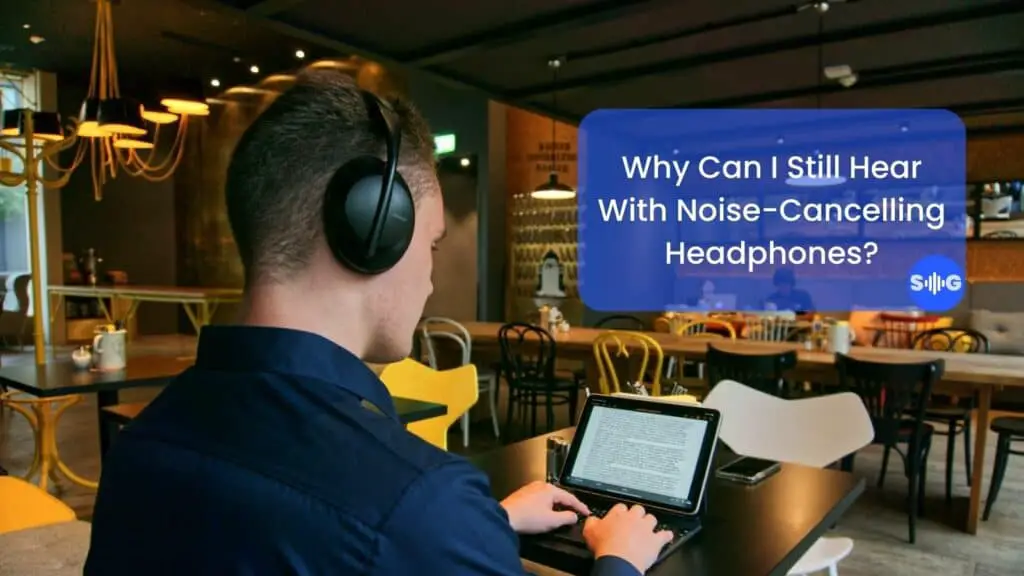
Why You Can Still Hear With Noise-Canceling Headphones
Noise cancellation is quite a new technology and far from perfect. Noise-cancelling headphones are active and usually have switches to turn the noise-cancelling on or off. They have tiny microphones that detect outside noise and generate opposite sound waves to cancel that noise out. Here’s a Youtube Video explaining exactly how this works.
The problem with the active method is that it mainly works with regular, predictable noise. For example, ambient noise, like background chatter in a coffee shop, will be easy to block, and sudden sounds on varying wavelengths may be more difficult. But there are also other, far more straightforward, reasons:
- Your headphones might not fit properly, causing them not to seal out external sound effectively.
- There could be a problem with the noise-detection microphone, and this could be an electronic defect or something as simple as earwax blocking it.
- The noise could be caused by a malfunction in the headphones, generating electric noise.
Why Can I Still Hear With Noise-Canceling AirPods?
The first generation of Apple AirPods Pro had noise cancellation but wasn’t very good at it. They only cancelled a small percentage of the noise that other in-ear earphones could, so if you have first-generation AirPods Pro or any other type of AirPods that are not Pro, their noise cancellation may be terrible or non-existent.
However, from the second generation, noise cancellation has improved significantly and is now on par with competing brands like Sony and Bose. So why would you still hear with your noise-cancelling AirPods?
The most common reason is an improper fitting. Over-ear headphones can block noise far more efficiently since they should fit over your ears. Since our ears have different shapes, in-ear earphones may not seal the ear canal properly, allowing more unwanted noise to pass through.
You should also remember that, despite how well the AirPods work, they are limited by the same technological limits as other noise-cancelling headphones. This means they can only actively cancel a limited range of soundwaves; anything beyond that range will still pass through to your eardrums.
Why Can’t Headphones Cancel 100% Of Background Noise?
To answer this question, we must look at how sound works. Sounds are vibrations, and if there’s something that can carry the vibrations, the sound will travel. Air is one of the things that enables these audio waves to pass.
Though it is possible to cancel sound altogether, the headphones must remove all air between your headphones and your eardrums to make that happen. When the air is removed, nothing allows the noise to travel, but the downside is that nothing will let your music travel to your eardrums, either.
That’s why there are two approaches to blocking or cancelling noise in headphones, and neither is perfect.
Are There Better Noise-Canceling Alternatives?
There are only two ways that headphones remove noise.
The first method is called noise isolation, which is a passive process. Noise isolation headphones (also called passive noise cancellation, or PNC) don’t have a switch to enable or disable noise reduction. They work by physically shielding your ears from outside noise.
The process is similar to how sound engineers would soundproof their studios. Some materials are excellent at absorbing sound and not letting the waves travel through. When headphone manufacturers use those materials, they ensure that noise won’t pass through to your ears as easily.
The problem is that high-volume or high-intensity noise will still pass through. As mentioned before, it’s impossible to block all sound without removing any substance that sound waves can travel through.
In this regard, active noise cancellation (or ANC) is far better since it actively identifies and isolates background noise and cancels it out. The best option would be a combination of both passive and active, but that’s already the standard for most high-end noise-cancelling headphones.
What Can I Do To Improve The Noise-Canceling Abilities?
You can try a few things to get better noise cancellation from your headphones.
1. Choose The Correct Ear Tips
If you’re using earbuds rather than over-ear headphones, there’s a good possibility that you received some additional ear tips in the package. If not, you should be able to buy some. The point is that you should preferably use ear tips that fit snugly in your ear canal since a snug fit will ensure better isolation against outside noise.
You should be able to shake your head without dislodging or moving your earbuds. If there’s any movement, they are too small.
2. Clean Your Headphones
Sometimes, a good cleaning can do a lot of good. Dust, dirt, and built-up earwax can cause problems with noise cancellation in a few ways. For example, in the case of earbuds, dirt can cause the buds not to seal your ear canal properly, allowing noise through. It can also block the noise-cancelling microphone, making it more challenging to identify the noises it must stop.
Before you clean your headphones, read up on the manufacturer’s website to see if there are specific instructions for cleaning your model of headphones. Also, don’t open or remove anything that could void your warranty.
The cleaning process is quite simple. You can wash the ear tips with mildly soapy water; the outer plastic or metallic shell should be fine with a damp cloth. But the most vital parts are all covered with mesh. These are the speakers and microphones.
You can try to wipe the mesh with a lint-free cloth, but if the dirt is stuck, you can carefully apply a 3% concentration of hydrogen peroxide to it and leave it for five minutes. Take a soft toothbrush, dip it in more hydrogen peroxide, and gently brush over the meshed-up parts. This should remove all earwax or other dirt from the headphones.
Be careful to do all this gently, as scrubbing too rough can push dirt through the mesh and cause even more problems.
Final Thoughts
If you can still hear while wearing your noise-canceling headphones, you can check if the headphones fit correctly and if there’s some dirt or earwax stuck on some of the vital mesh parts. These problems are easy enough to solve. However, if that doesn’t help, there’s a good possibility that it’s simply the best that current technology can do.
References
https://www.sony.co.uk/electronics/support/articles/00256977
https://support.apple.com/en-us/HT211147
https://www.quora.com/Why-do-I-still-hear-noise-when-wearing-noise-cancelling-headphones
https://www.nytimes.com/wirecutter/blog/what-noise-cancelling-headphones-do/
https://www.cnet.com/tech/mobile/noise-canceling-vs-noise-isolating-headphones-whats-the-difference/
https://www.bose.com/en_us/support/articles/HC338/productCodes/qc20/article.html.html.html.html
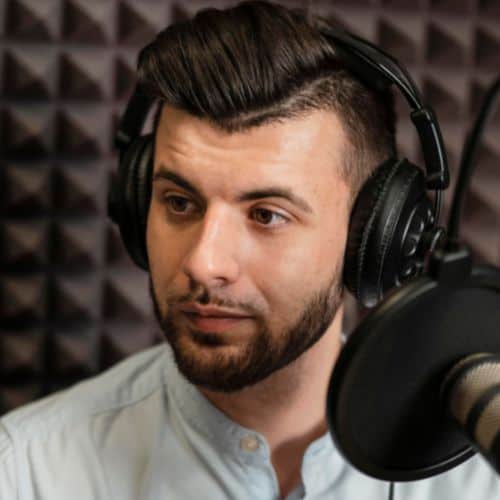
John Wilson
As a writer and passionate music lover, I write and contribute to many interesting things, especially audio equipment. I have a unique perspective and often write about things that nobody else does. This makes me a great resource for anyone looking for new and exciting information. I hope that my writing can be a source of inspiration for you.

John Wilson
As a writer and passionate music lover, I write and contribute to many interesting things, especially audio equipment. I have a unique perspective and often write about things that nobody else does. This makes me a great resource for anyone looking for new and exciting information. I hope that my writing can be a source of inspiration for you.
